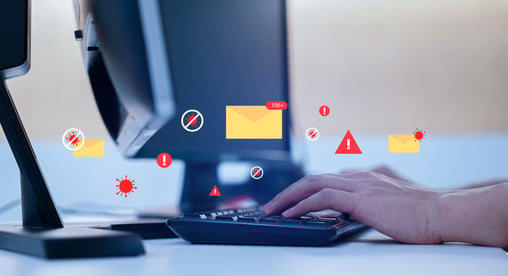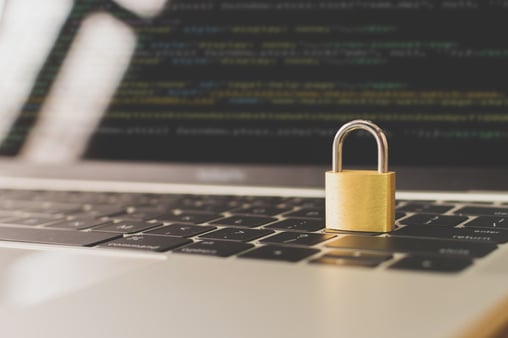Why People Use Email to Send Sensitive Information
How Does Email Work?
Why is Email Insecure?
Reasons why email is considered insecure include:
-
Unencrypted Communication: By default, email messages are sent in plain text, which means that the content of the email is not encrypted and can be intercepted and read by anyone with access to the email servers through which it passes. This lack of encryption makes email vulnerable to eavesdropping.
-
Limited Authentication: Email addresses and accounts can be easily impersonated. Email systems often rely on basic username and password authentication, which can be compromised through phishing or brute force attacks.
-
No End-to-End Encryption: While some email providers offer encryption in transit (e.g., using TLS), very few offer true end-to-end encryption. End-to-end encryption ensures that only the sender and intended recipient can read the message, and even the email service provider cannot access the content.
-
Data Retention: Emails can be stored indefinitely on servers, which means that even if you delete an email, copies may still exist on various servers or backup systems.
-
Malware and Phishing: Email is a common vector for spreading malware and phishing attacks. Cybercriminals can send malicious attachments or links in emails, tricking recipients into downloading malware or revealing sensitive information.
-
Social Engineering: Emails are often used in social engineering attacks, where attackers manipulate individuals into taking actions that compromise security, such as revealing passwords or financial information.
-
Lack of Control: Once you send an email, you have limited control over its security. You can't prevent the recipient from forwarding it or sharing it with others, potentially exposing sensitive information.
Who is Trying to Compromise your Data?
- Scam your email contacts with requests for money.
- Spoof your email to obtain further information from known contacts
- Access other online accounts where password information is available
- Collect personal information for identity theft.

What Information You Should Never Send Via Email
-
Full Name: A person's first and last name is considered PII, as it can uniquely identify them.
-
Date of Birth: Knowing a person's date of birth is often required for identity verification and can be used in combination with other information to commit fraud.
-
Social Security Number (SSN): In the United States, the SSN is a critical piece of PII used for various financial and government-related transactions. It's a prime target for identity theft.
-
Driver's License Number: This number is used for identification and verification purposes, and it's considered PII.
-
Passport Number: Passport numbers are used for international identification and travel, making them highly sensitive PII.
-
National Identification Numbers: Many countries have their own national identification numbers, which are considered PII. For example, the National Insurance Number (NIN) in the UK.
-
Financial Account Information: Details about bank accounts, credit cards, and other financial instruments are PII. This includes account numbers, credit card numbers, and bank routing numbers.
-
Mailing Address: Knowing a person's physical address can be used to locate them, and it's considered PII.
-
Email Address: Email addresses can be used to contact individuals and are often linked to various online accounts.
-
Phone Number: Phone numbers are used for communication and can also be linked to individuals' identities.
-
Biometric Data: Biometric information such as fingerprints, facial recognition data, and retinal scans are highly sensitive PII.
-
Medical Records: Information about a person's health, including medical history, treatment records, and health insurance information, is considered PII.
-
Employment Information: Details about a person's job, employer, and income are PII.
-
Education Records: Academic records, such as transcripts and student ID numbers, are PII.
-
Criminal Records: Information about a person's criminal history is considered PII and is typically protected by privacy laws.
-
IP Addresses: In some contexts, IP addresses can be considered PII, as they can be used to trace online activities back to individuals.
-
Usernames and Passwords: While not traditional PII, access credentials can be used to gain unauthorised access to various accounts and systems, making them sensitive.
-
Vehicle Identification Numbers (VINs): VINs are unique to each vehicle and are used for identification, making them PII.
-
Social Media Profiles: Information on social media, such as Facebook profiles, can reveal a lot about an individual and is considered PII in the context of online privacy.
What You Should Do if You're Asked to Send Sensitive Information Via Email
Secure Options to Consider
-
Password Protect Attached Files: A common misconception is that in password protecting attachments they are secure. A quick online search will direct you to a myriad of articles on how to hack files that have been password protected. Whilst better than a plain email attachment, for a determined hacker this option presents little challenge.
-
PGP Encrypted Emails: If you’re technical and the person you’re sending to is also technical, this option may work. However, for most email users downloading PGP software to create, encrypt and share keys, is not convenient or easy to implement.
-
WeTransfer: A commonly used, simple online tool, WeTransfer is a hosted solution for the secure exchange of messages and files. Whilst simple, and this relates to a large majority of similar online tools, access to your messages and files might be possible by the service provider, your data is stored on servers you have no access to and copies of your data are often made to ensure availability in the event of service outages. Often called ‘shadow IT’ it serves a purpose but doesn’t satisfy compliance mandates such as the GDPR.
-
FileCloud: A solution specifically designed for the purpose of secure message and file sharing. FileCloud can be installed alongside your email systems or licensed as a hosted service, providing end-to-end data security, visibility of transfers and when they’ve been accessed, and by whom. Major advantages include specific functionality to meet various compliance standards such as the GDPR, PCI-DSS and HIPAA, amongst others.
If your organisation needs to exchange messages and files with external entities which contain sensitive information, email should not be used. Pro2col, specialists in secure file sharing solutions, has various tools depending upon an organisations functional requirements and budget. Get in touch with one of our experts today, no matter how big or small your query - we're ready to help.
|


